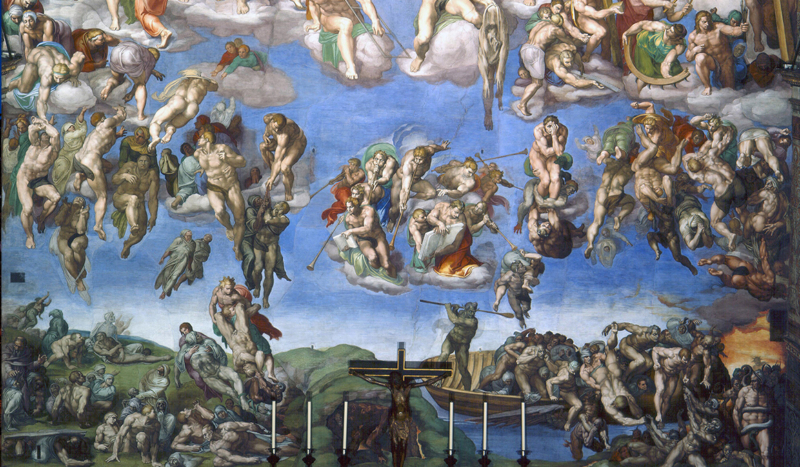
In a recent segment of Rising on The Hill TV, reporter Brianna Joy Gray commented that “the Catholic Church says it’s sinful to be homosexual.” During Pride month, Catholics hear that accusation a lot. It reflects a true misunderstanding of the Church’s teaching at best, and is deceptive at worst.
So what does the Church actually teach about same-sex attraction and why is it so important for Catholics to demand clear representation of their convictions?
Define Your Terms
Let’s start with the Catechism and a definition.
When we say “homosexual,” we mean men and women who are primarily (or only) attracted sexually to persons of the same sex. Saying someone has “same sex attraction” (SSA) simply means that when he or she experiences sexual desire, it is for someone of the same sex.
When that desire is acted upon, we come into the realm of “homosexual acts.” In paragraph 2357, the Catechism makes it clear that these acts are “contrary to natural law” and Scripture:
Basing itself on Sacred Scripture, which presents homosexual acts as acts of grave depravity, tradition has always declared that “homosexual acts are intrinsically disordered.”
The primary reason homosexual sexual acts are so gravely contrary to God’s law is that – much like a contraceptive marital act – they are inherently closed to the gift of new life. The Catechism states, “Under no circumstances can they be approved.”
While some within the Church worry that such language will alienate LGBTQ advocates, the Church has strongly spoken against sexual acts such as sodomy from the beginning. In the early 3rd-century, Tertullian wrote:
All other frenzies of the lusts which exceed the laws of nature, and are impious toward both [human] bodies and the sexes, we banish, not only from the threshold but also from all shelter of the Church, for they are not sins so much as monstrosities.
Natural (Dire) Consequences
The Church’s condemnation of sodomy and other homosexual acts in all circumstances places these acts in the category of “intrinsically evil” behaviors. This means that while ignorance or poor formation can lessen the guilt of the person performing them, the natural consequences are unavoidably grave and destructive to that person and all of society.
In Q 154 of the Summa, St. Thomas Aquinas explains the sins of lust – both hetero and homosexual – as seeking sexual gratification “not in accordance with right reason.” Lust happens in two ways:
- When the sex act is closed to either the begetting or raising of children (as in the case of artificial contraception or fornication)
- When a person’s choice of partner in the sex act is “disordered” (as in the case of adultery or incest)
Homosexual acts are disordered (read: not in accord with right reason) in both respects: they cannot conceive children and the partners cannot be married. This is why the Catechism calls them “objectively disordered,” and a real “trial” for those affected.
Pope Benedict XVI wrote in Light to the World: “Sexuality has an intrinsic meaning and direction which is not homosexual. The meaning and direction of sexuality is to bring about the union of man and woman and in this way give humanity posterity, children, a future.”
“Disordered” Feelings?
So why would God allow people to suffer from SSA? As the Catechism (2358) acknowledges, “the number of men and women who have deep-seated homosexual tendencies” is significant – and the number of those who believe they are gay is growing rapidly in the United States and other western nations.
Like every other human person, those with SSA “must be accepted with respect, compassion, and sensitivity. Every sign of unjust discrimination in their regard should be avoided.”
Also like every other person, homosexual men and women “are called to fulfill God’s will in their lives and, if they are Christians, to unite to the sacrifice of the Lord’s Cross the difficulties they may encounter from their condition.”
Chastity: The Universal Call
The Christian life is an ongoing transformation for every human person – a re-ordering of hearts and intellects darkened by original sin. “Be ye perfect as my Father is perfect” is no small challenge for serious Catholics.
Chastity – ordering our sexual powers according to nature and Christ’s revelation – is the only way of living for every Christian, regardless of whether their desires are naturally well-ordered (for the opposite sex) or disordered (for the same sex). As Basil the Great (ca. 367) noted, “He who is guilty of unseemliness with males will be under discipline for the same time as adulterers.”
When it comes to sexual behavior, “homosexual persons are called to chastity” along with every other Christian:
By the virtues of self-mastery that teach them inner freedom, at times by the support of disinterested friendship, by prayer and sacramental grace, they can and should gradually and resolutely approach Christian perfection.
Whether the chaste life is more difficult for someone with SSA than someone with heterosexual desires is a question distinct from the Church’s teaching that chastity is a universal expectation for every Christian.
Regardless of our sexual desires, chastity is “the successful integration of sexuality within the person and thus the inner unity of man in his bodily and spiritual being.”
Postscript: The Priesthood and SSA
Pope Benedict XVI also advised that “homosexuality is incompatible with the priestly vocation” to celibacy.
He notes, “It would be extremely dangerous if celibacy became a sort of pretext for bringing people into the priesthood who don’t want to get married anyway. For, in the end, their attitude toward man or woman is somehow distorted, off-center, and, in any case, is not within the direction of creation.”
A man who has no desire for Christian marriage with a woman cannot renounce that desire to embrace the cross of the celibate life.
Benedict’s advice, while not doctrine, is based on the Church’s long experience with the role homosexual priests and seminarians play in sexual abuse scandals.

